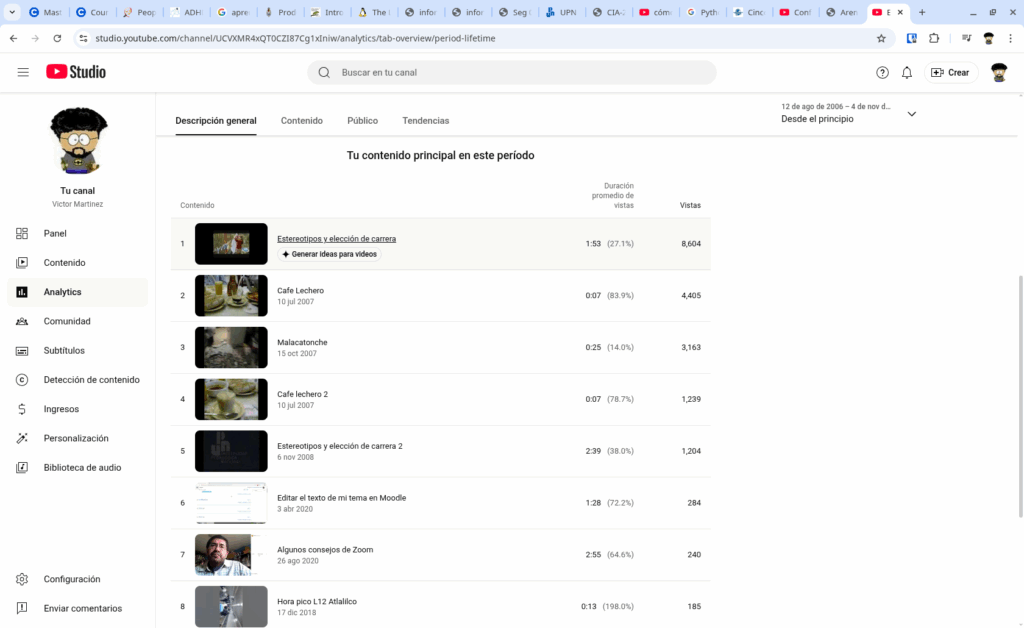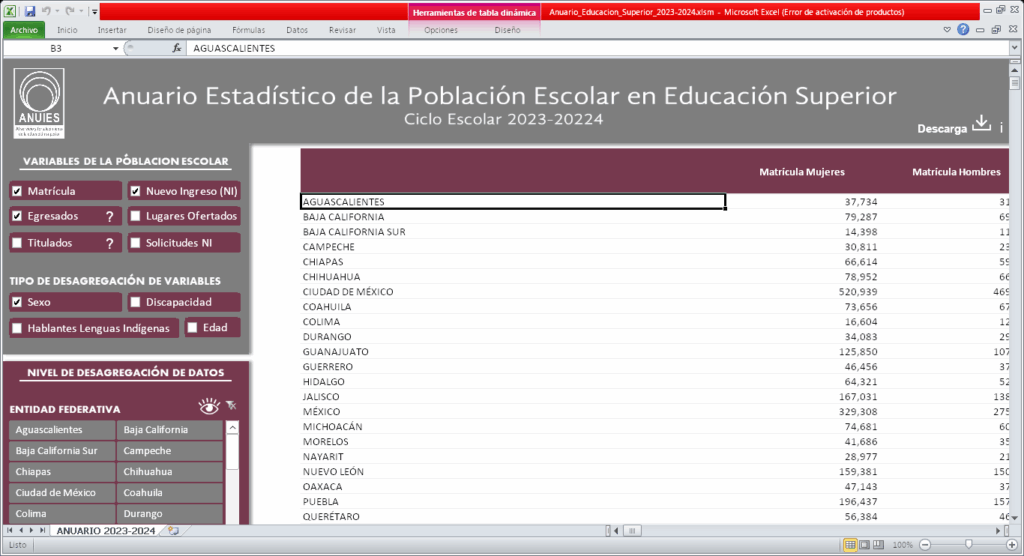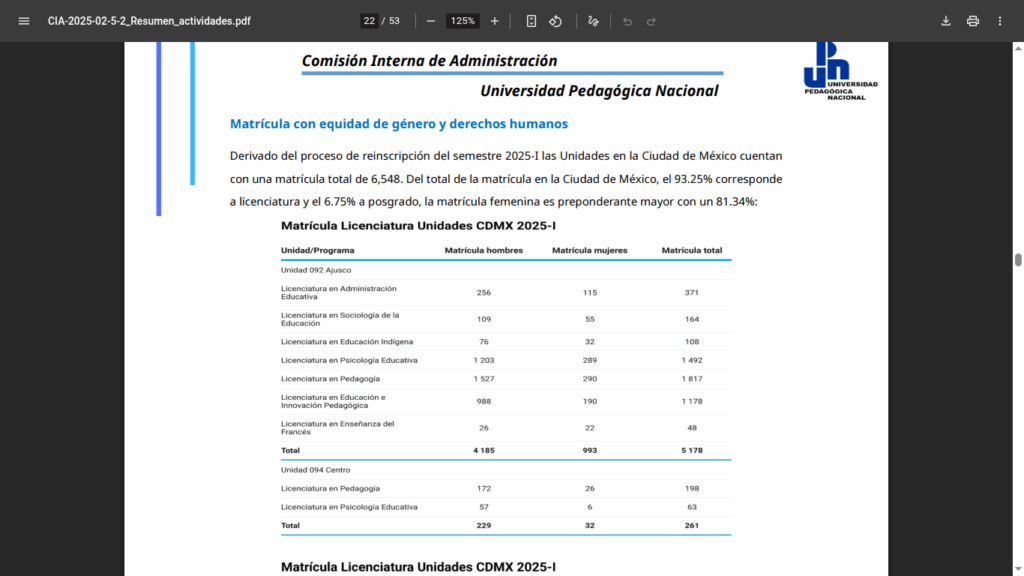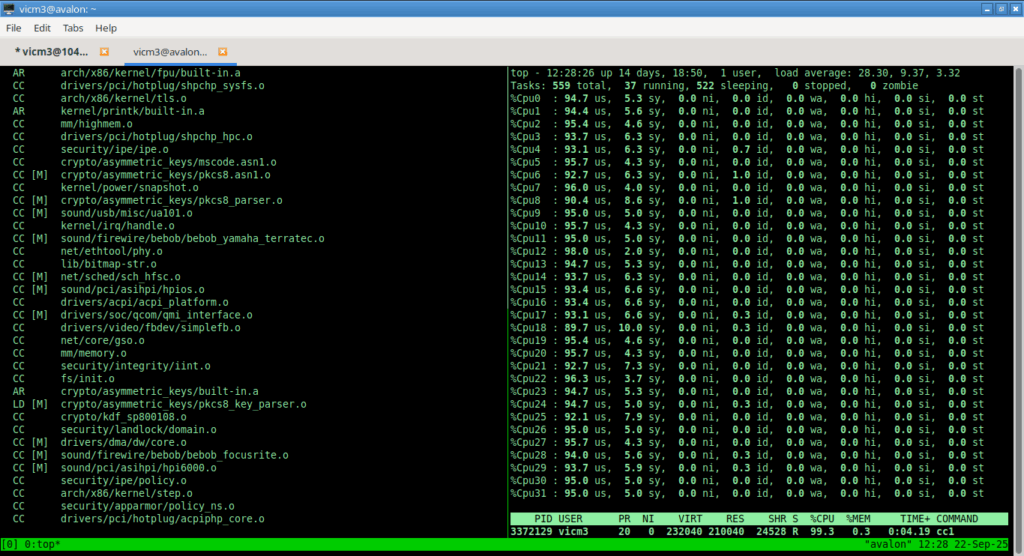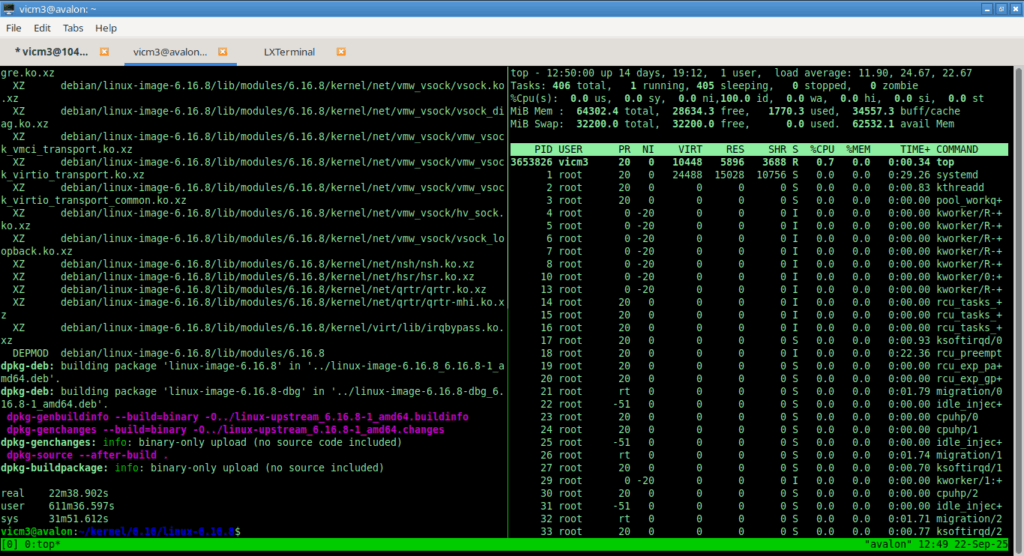Blografia.net
Last update: January 07, 2026 06:02 AM
December 31, 2025
Diario de un Mexicano en Japon
¡Feliz 2026!

あけおめことよろです!
Lo anterior es ya una forma que ya se puede considerar arcaica de decir “¡feliz año nuevo!” en japonés. Estuvo de moda hace muchos años, por lo que creo que ningún joven ahora la use… pero uno nunca sabe.
El caso es que ya ha comenzado el 2026, y con él, una nueva oportunidad de darle un mejor rumbo a nuestra efímera existencia en este mundo.
Este año es el del CABALLO. Lo pongo en mayúsculas porque es el año del animal en el que nací, lo que me convierte a mí y a todos los que cumplan años en múltiplos de 12, en 年男 (toshi otoko) o 年女 (toshi onna), según sea el caso. Ignoro totalmente cómo se maneje para quienes no se identifiquen con uno de esos dos géneros, así que en vez de escribir una falacia, mejor acepto que no sé… Regresando al punto, este año cumpliré 48 primaveras… y ya veo así bien “cerquitas” el quinto piso… ¡Chaaaaaaangos! Sí que ha pasado el tiempo.
Deseo que el 2026 sea el mejor año que hayan tenido en sus vidas. Aquí andamos todavía.
Reciban un abrazo desde las tierras de Saitama, en Japón
The post ¡Feliz 2026! first appeared on ¡Un mexicano en Japón!.December 30, 2025
Diario de un Mexicano en Japon
El 2025 en un kanji
Ligas a años anteriores:
- El 2024 en un kanji
- El 2023 en un kanji
- El 2022 en un kanji
- El 2021 en un kanji
- El 2020 en un kanji
- El 2019 en un kanji
- El 2018 en un kanji
- El 2017 en un kanji
- El 2016 en un kanji
- El 2015 en un kanji
- El 2014 en un kanji
- El 2013 en un kanji
- El 2012 en un kanji
- El 2011 en un kanji
- El 2010 en un kanji
- El 2009 en un kanji
- El 2008 en un kanji
- El 2007 en un kanji
¡Hola blog!
(Tuve que hacer una pausa para ir a regañar a los niños porque se estaban peleando… a las 10 PM…)
Vamos recapitulando el año que termina.
Primero que nada, sí escribí más que el año anterior. Quizá no es tanto como hubiera querido, pero se cumplió el propósito que hice a prinicipios de 2025.
Segundo, y entrando de lleno en el tema de este escrito: el kanji de este año prácticamente lo tenía decidido desde justamente finales de 2024. Cuando tuve que decidir qué kanji escogería para ese año, inmediatamente pensé en 2 candidatos, pero me decidí por 「築」 porque envolvía más adecuadamente lo acaecido justo en los últimos meses de 2024. El segundo candidato sería entonces el elegido para ser el kanji de 2025, aunque ahora en diciembre dudé un poco debido a un viaje de trabajo que tuve a Ciudad de México, aventura que contaré en otra ocasión. Sin embargo, a final me decidí por el que ya tenía elegido porque en definitiva es un parteaguas en mi jornada en el país del sol naciente.
Sin más preámbulos, mi kanji del 2025 es:

Significa tal cual “casa”. Si el año pasado el kanji fue para reconocer todo lo que quedó consolidado para el futuro, el de este año indudablemente tenía que ser el kanji de “casa” porque, después de casi 23 años de vivir de este lado del charco, decidí dar un gran paso en mi vida y comprar casa en Japón. O bueno, sacar un crédito para pagar la casa y tener que pagarlo hasta que tenga 79 años. Pero de momento, olvidémonos de los detalles que no son felices y concentrémonos en los que sí lo son.
Aunque todavía no termino de recapitular el 2023, sinceramente nunca pensé que estaria escribiendo que había comprado una casa 2 años después siendo que mi situación al final de ese año no era para nada buena. Obviamente voy a entrar en más detalles en la última parte de esa serie, pero les puedo adelantar lo siguiente:
- A finales de octubre de 2023 hubo despidos masivos en la empresa en la que laboraba en ese entonces
- Estuve enviando currículums a todo lo que se moviera porque sin trabajo nos íbamos a quedar en la calle en cuestión de medio año
- Me batearon de muchísimas empresas
- Terminé en una empresa internacional, en al menos una mejor posición en la que estaba antes
El último de los puntos anteriores fue lo que nos (contando a mi esposa porque ella se aventó una buena parte de los trámites y de entender todo lo que había que hacer) motivó a tomar la decisión de adquirir vivienda propia… en caso de que una cumpliera las condiciones que buscábamos y que se adecuara a nuestro presupuesto. Y justamente en octubre de 2024 mi esposa, que para ese entonces ya tenía como pasatiempo estar buscando casas (no es broma), se percató que una vivienda que le gustaba y que había estado a la venta durante casi un año había bajado de precio a uno que sí se acomodaba, así que, prácticamente de un día para otro, comenzamos la odisea de la compra de la casa.
Un acontecimiento de tal magnitud definitivamente merece un escrito exclusivo, así que omitiré, por el momento, muchos detalles e información que quizá pudiera serle útil a alguien que se quiera aventar a comprar casa en Japón.
La conclusión, después de tooooooodo el show y el mar de trámites, que por cierto todavía no terminan, logré sacar un préstamo de un banco, adquirir un seguro para que la deuda se cancele en caso de que yo muera o no pueda trabajar por alguna enfermedad terminal y comprar el inmueble desde el que estoy escribiendo este escrito.
Hay muchos, muchísimos detalles que comentar respecto a la adquisición de una casa en Japón, pero el punto que más quiero enfatizar en este momento es el hecho de que las casas en este país PIERDEN VALOR con el paso de los años, al grado de que en 15 o 20 años, esta vivienda va a valer prácticamente 0 yenes; lo que TIENE LA POSIBILIDAD de tener plusvalía es el terreno, pero no es 100% seguro. En el peor de los casos, el valor del terreno quedaría en lo mismo en lo que lo adquirimos.
Se preguntarán entonces para qué comprar una casa si no es un patrimonio seguro con lo sería en México (y en muchos otros países). Y la respuesta es simple: para tener patrimonio, aunque no le ganemos nada. Ya siendo más prácticos y realistas:
- Continuar rentando siempre es opción, pero a final de cuentas terminas con nada en las manos
- Cuando tienes niños, vivir en departamentos siempre genera más estrés de lo normal porque tienes que estar cuidando de que no hagan ruido después de ciertas horas, y algunas veces es imposible, por lo que terminas ganándote quejas de los vecinos
- Creo que para un niño es importante tener un lugar al qué llamar “casa”. Cierto: puede ser uno rentado, y no le quita para nada mérito el que lo sea, pero al menos mi percepción siempre fue la de tener un lugar fijo al que uno pueda regresar en el futuro. Es difícil explicarlo, pero bien que mal, la casa en la que crecí era propia, y de alguna forma siempre me sentía seguro ahí
- Ya era hora de decidir quedarme en Japón o regresar a México. Sí, ya sé, han sido casi 23 años, pero aunque regresar a mi rancho todavía es opción en el futuro, tenía que decidir que estaría en Japón por al menos unos 10 o 15 años más, en lo que los niños crecen y se desarrollan. Tuve muchas dudas en años anteriores porque siempre estaba a la expectativa de que en cualquier momento pudiera presentarse algo en México que me convenciera a volver, pero eso no le daba nada de seguridad a mi familia, no porque me fuera a dejar solo, sino porque no podíamos trazar un plan de desarrollo a largo plazo. En corto: me manché con el tiempo que me tomó llegar a este punto
Soy firme creyente de que no hay casualidades, y de que nunca entendemos por qué suceden las cosas hasta que volteamos a ver todo lo que nos llevó a ellas. Para mí, este fue el momento perfecto para dar el “salto de fe” y echarme la deuda de la casa encima, pero lo hago después de haber estado en el fondo de un pozo por la depresión, después de pasar días, semanas y meses con un futuro incierto por mala administración del jefe de la empresa en la que trabajé hasta principios de 2024, y después de haber casi reconstruido del todo mis mecanismos de autodefensa y autoestima. Por ello, aunque nunca he sido fan de tener algo físico para demostrar que hice algo, la casa representa un pilar, un momento grande de mi vida en el que me volví a edificar después de tocar fondo y estar completamente destrozado física y emocionalmente. Y es precisamente por eso que mi kanji de 2025 es 「家」.
El kanji de 2025 en Japón
Japón también tuvo grandes momentos históricos este año. Quizá el más relevante fue el de es la primera vez que una mujer se convierte en primer ministro del país: Sanae Takaichi; el costo de los bienes y servicios se fue a las alturas, y ahora pagamos por el arroz más del doble de lo que pagábamos hace apenas 3 o 4 años, y ni se diga de los aumentos en los impuestos… Y para los extranjeros que residimos aquí, se viene un endurecimiento de los requisitos para vivir, así como de un aumento, por demás exagerado, de las cuotas para la renovación del estatus de residencia… pero eso ya lo contaré en otra ocasión.
El caso es que había muchos candidatos muy buenos para coronarse como el kanji del año en el país, pero para sorpresa de muchos, el escogido fue 「熊」 (kuma), que literalmente significa “oso”, principalmente por el aumento de ataques de esos animales a humanos. Pero no crean: hay quienes dicen que es una “tapadera” del gobierno para evitar dar una mala impresión, y que los kanji que realmente reflejan la condición actual del país bien pudieran ser 「税」 (“sei”, impuesto), 「高」(“taka”, “kou”, literalmente “alto”, por la primer ministro Sanae Takaichi 「高市早苗」… y la realidad es que esos kanji están entre los primeros 20 lugares de los votados este año. Con todo, y siendo que no me gusta la política en general, dejo esas confabulaciones, rumores y demás, a los debidos blogs, videoblogs, tiktoks y similares “expertos” (noten las comillas) en el tema.
Qué esperar en el 2026
Hablo concretamente del blog. No quiero prometer algo que no pueda cumplir, pero sí quiero prometer seguir con la tendencia de escribir más seguido.
En un comentario recibido hace ya tiempo me decían que este blog debería haber “evolucionado” a un videoblog. La verdad es que la idea siempre me ha llamado la atención, pero siempre termino regresando a lo escrito por 2 razones:
- Si no tengo tiempo para escribir, mucho menos para editar video (ya ni se diga grabar)
- Me gusta más escribir que grabar
Pero no estoy peleado con la idea. El problema principal es que la vida de adulto me alcanzó, y desde el punto de vista de mi yo de 20 años, es horrible no tener el tiempo que tenía en ese entonces. Como siempre lo he dicho, no es un sacrificio, sino un intercambio de tiempo personal por tiempo con la familia, de unas experiencias por otras. Y la neta, me gusta ser papá. Pero dicho lo anterior, en algún momento haré el experimento y veré qué tanto me toma hacer un video de un escrito del blog.
También los puedo mencionar que, ahora que soy cinta negra en karate, quiero ayudar a difundir el estilo que practico (tradicional de Okinawa) en el ámbito internacional. Todavía no estoy seguro cómo, pero algo voy a hacer.
En ondas profesionales, ahora que hice contacto con la comunidad de investigadores de México, y siguiendo en contacto con gente de la Universidad de Guadalajara, estoy buscando la forma de hacer algo en conjunto. Ya veremos qué sale de esta idea.
Por lo demás, aquí sigo. El blog no lo abandono, y creo que nunca lo haré. Sigo leyendo TODOS los comentarios que me llegan, y sigo respondiendo correos cuando alguien me escribe.
Pasen todos una excelente noche de San Silvestre, y que el 2026 les traiga dicha, y sobre todo, lo que requieran para que sus planes se concreten y lleven a cabo. Reciban un fuerte abrazo desde Saitama, porque ya no vivo en Tokio, aunque me queda aquí en corto.
¡Adiós serpiente! Nos vemos en 12 años.
The post El 2025 en un kanji first appeared on ¡Un mexicano en Japón!.December 15, 2025
Gwolf
Unique security and privacy threats of large language models — a comprehensive survey
This post is an unpublished review for Unique security and privacy threats of large language models — a comprehensive survey
Much has been written about large language models (LLMs) being a risk to user security and privacy, including the issue that, being trained with datasets whose provenance and licensing are not always clear, they can be tricked into producing bits of data that should not be divulgated. I took on reading this article as means to gain a better understanding of this area. The article completely fulfilled my expectations.
This is a review article, which is not a common format for me to follow: instead of digging deep into a given topic, including an experiment or some way of proofing the authors’ claims, a review article will contain a brief explanation and taxonomy of the issues at hand, and a large number of references covering the field. And, at 36 pages and 151 references, that’s exactly what we get.
The article is roughly split in two parts: The first three sections present the issue of security and privacy threats as seen by the authors, as well as the taxonomy within which the review will be performed, and sections 4 through 7 cover the different moments in the life cycle of a LLM model (at pre-training, during fine-tuning, when deploying systems that will interact with end-users, and when deploying LLM-based agents), detailing their relevant publications. For each of said moments, the authors first explore the nature of the relevant risks, then present relevant attacks, and finally close outlining countermeasures to said attacks.
The text is accompanied all throughout its development with tables, pipeline diagrams and attack examples that visually guide the reader. While the examples presented are sometimes a bit simplistic, they are a welcome guide and aid to follow the explanations; the explanations for each of the attack models are necessarily not very deep, and I was often left wondering I correctly understood a given topic, or wanting to dig deeper – but being this a review article, it is absolutely understandable.
The authors present an easy to read prose, and this article covers an important spot in understanding this large, important, and emerging area of LLM-related study.
December 05, 2025
Victor Martínez
Moodle 4.5 LTS
Este año me propuse en verano hacer el cambio de versión Moodle para pasarme a la versión de soporte a largo plazo (Long Term Support LTS) y medio lo preparé, fui al DC25, estuve haciendo otras cosas, salió Debian 13 (Trixie) y lo que pensé que era un montón de tiempo para realizar y probarlo antes de que regresáramos a clase, resultó en la realidad quedarme en apenas cuatro días incluyendo un fin de semana.
Preferí esperar al final de semestre… y pasó que los estudiantes de UPN se fueron a paro en los últimos días de octubre y a la fecha no hay solución.
En noviembre pensé en probar en mi máquina de desarrollo Trixie y Moodle para en la de producción eventualmente realizar el mismo proceso, en la práctica probé si se podía pasar a 4.5 desde 4.1 en PHP7.4 y más o menos quedó, pero resulta que el LTS actual solo soporta hasta 8.3 y Trixie incluye 8.4, volví a probar y efectivamente hay que mover algún pedacito de la revisión de ambiente con un hack medio feo, comentar en mi caso la revisión de la versión, recuerdo en 3.1 haber incluido la versión con un > más alto del que venía incluido, si más elegante pero que no documente tan a detalle para recuperar en esta ocasión y ahora que pase a producción espero poner en mi cheatsheet que supongo si puedo legarle a alguien esta tarea será más bien la documentación.
Total que en desarrollo ya esta funcionando y más o menos probado, por supuesto falta la prueba del usuario de a pie, pero esa prefiero hacerla en producción cuando haya acceso físico a las máquinas, fue muy interesante porque antes del paro estuvo fallando mucho la energía eléctrica un poco por eso y por el asunto de una falla en la actualización, que tiene rato que no me pasa, que no me he animado a actualizar.
Con algo de tiempo extra me dí cuenta que efectivamente tiene un rato que sigo el LTS con git y más bien hago mi repositorio local con 3.1 fue el último que jale directamente del git de Moodle y solo actualizaba con pull, a partir de ahí 3.5, 3.9, 4.1 y ahora 4.5.
A partir de 3.1 ya en git se termine con este esquema, primero por el firewall que me bloqueaba github, pero especialmente para poder mantener los temas, plugins, cursos y añadidos en un solo lugar actualizar las muchas instancias que en esa época me tocaba mantener, el día de hoy son sólo cuatro, una sola de producción, pero en su momento llegó a la veintena y hacerlo para 2 me toma el mismo tiempo que para más ya con el flujo bien trabajado, entonces se quedó así… he tenido curiosidad de como hace informática, que he visto más bien usan el stable con un ciclo de un año a diferencia de los 3 años de soporte del LTS y como tiene rato que no soy tutor en los cursos en línea de otros programas no estoy tan seguro, pero así hicieron con los sistemas en el confinamiento según para no saturar los servidores.
November 21, 2025
Victor Martínez
Soy Joven
Este texto lo escribo como hija, como hermana mayor, como estudiante de la Universidad Pedagógica 141 y, más que nada, como joven que vive, observa y cuestiona el mundo que le rodea. Lo escribo desde el lugar que ocupa una hermana mayor que aprende a ser ejemplo incluso cuando también tiene dudas y miedos; y desde el compromiso que implica formarme como futura docente y/o orientadora
Lo escribo en apoyo a mis compañeros de la Universidad Pedagógica Nacional, sede Ajusco, quienes en este momento se encuentran en paro, ejerciendo su derecho a manifestarse y a exigir condiciones dignas para su formación y para el futuro de la educación en nuestro país. Su lucha no es solo suya: es un reflejo de las problemáticas que atraviesan nuestros espacios educativos, de las carencias que se han normalizado y de la urgencia de una transformación real.
Lo escribo como un desahogo para mí, como joven estudiante que hoy elijo levantar la voz a mi manera no con gritos si no con lírica, no con violencia si no palabras este poema, inspirado en el histórico discurso del 2 de diciembre de 1972 de Salvador Allende, cuando afirmó con fuerza y convicción que “ser joven y no ser revolucionario es una contradicción hasta biológica” Este es un recordatorio de que la juventud es impulso, es mirada crítica, es inconformidad ante la injusticia y, sobre todo, es posibilidad de cambio.
Te invito querido lector que leas esto con ojos críticos, a actuar ante una injusticia, pues somos seres históricos, somos hijos de quienes lucharon para nosotros estar aquí y lucharemos para los que vienen atrás de nosotros, pues somos la revolución.
ATTM: V.V.
Universidad Pedagógica Nacional 141
Guadalajara, Jalisco.
November 19, 2025
Gwolf
While it is cold-ish season in the North hemisphere...
Last week, our university held a «Mega Vaccination Center». Things cannot be small or regular with my university, ever! According to the official information, during last week ≈31,000 people were given a total of ≈74,000 vaccine dosis against influenza, COVID-19, pneumococcal disease and measles (specific vaccines for each person selected according to an age profile).
I was a tiny blip in said numbers. One person, three shots. Took me three hours, but am quite happy to have been among the huge crowd.
(↑ photo credit: La Jornada, 2025.11.14)
And why am I bringing this up? Because I have long been involved in organizing DebConf, the best conference ever, naturally devoted to improving Debian GNU/Linux. And last year, our COVID reaction procedures ended up hurting people we care about. We, as organizers, are taking it seriously to shape a humane COVID handling policy that is, at the same time, responsible and respectful for people who are (reasonably!) afraid to catch the infection. No, COVID did not disappear in 2022, and its effects are not something we can turn a blind eye to.
Next year, DebConf will take place in Santa Fe, Argentina, in July. This means, it will be a Winter DebConf. And while you can catch COVID (or influenza, or just a bad cold) at any time of year, odds are a bit higher.
I know not every country still administers free COVID or influenza vaccines to anybody who requests them. And I know that any protection I might have got now will be quite weaker by July. But I feel it necessary to ask of everyone who can get it to get a shot. Most Northern Hemisphere countries will have a vaccination campaign (or at least, higher vaccine availability) before Winter.
If you plan to attend DebConf (hell… If you plan to attend any massive gathering of people travelling from all over the world to sit at a crowded auditorium) during the next year, please… Act responsibly. For yourself and for those surrounding you. Get vaccinated. It won’t absolutely save you from catching it, but it will reduce the probability. And if you do catch it, you will probably have a much milder version. And thus, you will spread it less during the first days until (and if!) you start developing symptoms.
November 14, 2025
Gwolf
404 not found
Found this grafitti on the wall behind my house today:
November 05, 2025
Victor Martínez
Mi contenido en youtube
Pero mejor en texto
1 Estereotipos y elección de carrera 6 nov 2008 1:53 (27.1%) 8,604
2 Cafe Lechero 10 jul 2007 0:07 (83.9%) 4,405
3 Malacatonche 15 oct 2007 0:25 (14.0%) 3,163
4 Cafe lechero 2 10 jul 2007 0:07 (78.7%) 1,239
5 Estereotipos y elección de carrera 26 nov 2008 2:39 (38.0%) 1,204
6 Editar el texto de mi tema en Moodle 3 abr 2020 1:28 (72.2%) 284
7 Algunos consejos de Zoom 26 ago 2020 2:55 (64.6%) 240
8 Hora pico L12 Atlalilco 17 dic 2018 0:13 (198.0%) 185
9 Vista de lectura en Power Point 22 jun 2022 0:53 (34.7%) 159
10 Crear una cuenta en Moodle en sagan 2:27 (30.6%) 142
El 1 y 5 son un video que querian compartir unas estudiantes de psicología cuando era un poco latoso crear una cuenta en Youtube y para no hacerlo me pidieron que lo hiciera y que ademas por la época tuvo que ser en dos partes que también era difícil entonces dividir un video, ese es el contenido más popular de mi canal
2 es café lechero servido en el restaurante la parroquia hoy día los portales en el puerto de Veracruz tomado con mi camara Panasonic que en esa época 2007, no incluia microfono…
3 es de cuando se cayó el aplanado del cemento del techo de la cocina en octubre de 2007, por un mal trabajo del albañil, igual sin audio…
4 otro de la cuatro veces heroica… bueno del café…
6 un video que prepare durante el confinamiento como apoyo a mis estudiantes que terminó siendo un pequeño curso de Moodle para toda la comunidad UPN.
7 Durante el confinamiento con mis compañeros y las docentes de mis hijos vi que había un montón de dudas sobre Zoom, aquí grabe de manera breve y concisa los mejores consejos que saque de errores y consultas que había en esos días.
8 En 2018 como es el transbordo largo de Atlalilco originalmente para Fernando Barajas que le gustaron las caminadoras y tuvo la fortuna de usar ese transbordo cuando no había mucha gente.
9 Durante el encuentro ELCHAT de 2022 como no usamos Zoom, como usar Power Point en un modo distinto al de presentar para utilizarlo con programas diferentes, por supuesto esto desde entonces se puede lograr con un PDF y el navegador, pero en ese año para algunos aún era un poco nuevo.
10. De la plataforma en Moodle del Cuerpo Académico que tenemos corriendo desde 2007, como registrarse que desde 2024, no podemos usar cuentas de yahoo o gmail porque no nos han querido añadir SPF o DKIM, dicho sea de paso la presentación que usó de ejemplo para el video anterior Claroline la cual mantuvimos como hasta 2010, pero nos pasamos a Moodle por el abandono y eventual cambio de la misma a el tipo MOOC.
Son las estadísticas desde 12 de agosto de 2006 al 4 de noviembre de 2025, por eso digo que no son tan popular, a lo mejor haciendo un análisis por caso si fueron populares y útiles en su momento, pero no voy que vuele para youtuber o influencer…
Si gustan ver cada uno de ellos por acá esta mi canal
October 23, 2025
Victor Martínez
Lapsus, errata o algo nos querrán decir…
Por 2023, mencione que el Sistema Integrado de Información de la Educación Superior que publica información muy interesante instituciones de educación superior al respecto del logo.
Al día de hoy el SIIES [1] y desde que se lanzó no hay forma de contacto o mención de quien lo actualiza, es decir a quién dirigirse en caso de necesitarlo, desde entonces tiene información importante, pero hasta hoy todavía para la UPN viene el logo de la misma, pero de Colombia. En la entrada anterior mencioné que ya había intentado contactarlos para corregirlo, lo intente por redes a algún correo que no es precisamente del SIIES y con estas entradas y no parece interesarles.
Más interesante en lugar de aparecer como institución de educación pública, federal. Como si lo hacemos en otros documentos, aquí aparecemos en «Escuelas Normales e Instituciones de Formación Docente» que o es un lapsus o algo no están queriendo sugerir.
[1] https://www.siies.unam.mx/
October 21, 2025
Gwolf
LLM Hallucinations in Practical Code Generation — Phenomena, Mechanism, and Mitigation
This post is a review for Computing Reviews for LLM Hallucinations in Practical Code Generation — Phenomena, Mechanism, and Mitigation , a article published in Proceedings of the ACM on Software Engineering, Volume 2, Issue ISSTA
How good can large language models (LLMs) be at generating code? This may not seem like a very novel question, as several benchmarks (for example, HumanEval and MBPP, published in 2021) existed before LLMs burst into public view and started the current artificial intelligence (AI) “inflation.” However, as the paper’s authors point out, code generation is very seldom done as an isolated function, but instead must be deployed in a coherent fashion together with the rest of the project or repository it is meant to be integrated into. Today, several benchmarks (for example, CoderEval or EvoCodeBench) measure the functional correctness of LLM-generated code via test case pass rates.
This paper brings a new proposal to the table: comparing LLM-generated repository-level evaluated code by examining the hallucinations generated. The authors begin by running the Python code generation tasks proposed in the CoderEval benchmark against six code-generating LLMs. Next, they analyze the results and build a taxonomy to describe code-based LLM hallucinations, with three types of conflicts (task requirement, factual knowledge, and project context) as first-level categories and eight subcategories within them. The authors then compare the results of each of the LLMs per the main hallucination category. Finally, they try to find the root cause for the hallucinations.
The paper is structured very clearly, not only presenting the three research questions (RQ) but also referring to them as needed to explain why and how each partial result is interpreted. RQ1 (establishing a hallucination taxonomy) is the most thoroughly explored. While RQ2 (LLM comparison) is clear, it just presents straightforward results without much analysis. RQ3 (root cause discussion) is undoubtedly interesting, but I feel it to be much more speculative and not directly related to the analysis performed.
After tackling their research questions, Zhang et al. propose a possible mitigation to counter the effect of hallucinations: enhance the LLM with retrieval-augmented generation (RAG) so it better understands task requirements, factual knowledge, and project context. The presented results show that all of the models are clearly (though modestly) improved by the proposed RAG-based mitigation.
The paper is clearly written and easy to read. It should provide its target audience with interesting insights and discussions. I would have liked more details on their RAG implementation, but I suppose that’s for a follow-up work.
October 14, 2025
Gwolf
Can a server be just too stable?
One of my servers at work leads a very light life: it is our main backups server (so it has a I/O spike at night, with little CPU involvement) and has some minor services running (i.e. a couple of Tor relays and my personal email server — yes, I have the authorization for it 😉). It is a very stable machine… But today I was surprised:
As I am about to migrate it to Debian 13 (Trixie), naturally, I am set to reboot it. But before doing so:
$ w
12:21:54 up 1048 days, 0 min, 1 user, load average: 0.22, 0.17, 0.17
USER TTY FROM LOGIN@ IDLE JCPU PCPU WHAT
gwolf 192.168.10.3 12:21 0.00s 0.02s sshd-session: gwolf [priv]
Wow. Did I really last reboot this server on December 1 2022?
(Yes, I know this might speak bad of my security practices, as there are several kernel updates I never applied, even having installed the relevant packages. Still, it got me impressed 😉)
Debian. Rock solid.
September 22, 2025
Victor Martínez
Un par de erratas
Recientemente, bueno una no tan recién, encontré dos errores uno, en los Anuarios Estadísticos de Educación Superior de ANUIES, especialmente en el de 2023-2024, en la cabecera está mal la fecha, que puede ser un error simple de dedo, lo reporte en abril de este año al correo que proveen en la página como contacto, en lugar de decir 2023-2024, dice 2023-20224.
De hecho fuí y descargue el archivo hoy, previendo que ya lo hubieran arreglado, no parece ser así [1]
Y el segundo y más interesante es del resumen de actividades de la Comisión Interna de Administración en su segunda sesión del año, la cual revisamos en clase para conocer la matrícula escolar en Ajusco y unidades de la Ciudad de México [2], nos encontramos con esto:
Que no es tanta sorpresa, dice que «la matrícula femenina es preponderantemente mayor con un 81.34%», lo cual es más o menos lo esperado y parte de un ejercicio que se realiza más adelante en el semestre al trabajar con hoja de cálculo y graficas, pero que adelantamos para mostrar la búsqueda en sitios de gobierno y la complejidad que presenta, pero el punto importante aquí es que si la afirmación entre comillas que se puede ver en la captura es correcta, entonces las etiquetas de datos están incorrectas, es decir matrícula hombres, matricula mujeres, o si las etiquetas son correctas la afirmación de arriba es incorrecta, por el comportamiento de la Unidad Ajusco y de la licenciatura lo más probable es que las etiquetas están incorrectas, por supuesto se puede cotejar con el anuario de ANUIES, pero no he hecho el ejercicio, puesto que ya está disponible el de 24-25.
[1] https://www.anuies.mx/gestor/data/personal/anuies05/anuario/Anuario_Educacion_Superior_2023-2024.zip
[2] https://cia.upnvirtual.edu.mx/docs/022025/CIA-2025-02-5-2_Resumen_actividades.pdf
I pay for
32 cores, and gona use all of them…
Or if you are on a CLI browser
11:40:03 AM CPU %user %nice %system %iowait %steal %idle 12:20:01 PM all 0.01 0.00 0.01 0.01 0.00 99.97 12:30:03 PM all 28.12 0.00 1.86 0.11 0.00 69.91 12:40:03 PM all 94.25 0.00 5.50 0.00 0.00 0.24 12:50:01 PM all 68.60 0.00 3.51 2.67 0.00 25.23
11:40:03 AM runq-sz plist-sz ldavg-1 ldavg-5 ldavg-15 blocked 12:20:01 PM 0 468 0.00 0.00 0.00 0 12:30:03 PM 35 618 34.77 16.78 6.56 0 12:40:03 PM 35 616 33.82 32.07 19.98 0 12:50:01 PM 0 472 10.95 24.26 22.55 0 time real 22m38.902s user 611m36.597s sys 31m51.612s
September 21, 2025
Gwolf
We, Programmers A Chronicle of Coders from Ada to AI
This post is a review for Computing Reviews for We, Programmers A Chronicle of Coders from Ada to AI , a book published in Addison-Wesley
When this book was presented as available for review, I jumped on it. After all, who doesn’t love reading a nice bit of computing history, as told by a well-known author (affectionaly known as “Uncle Bob”), one who has been immersed in computing since forever? What’s not to like there?
Reading on, the book does not disappoint. Much to the contrary, it digs into details absent in most computer history books that, being an operating systems and computer architecture geek, I absolutely enjoyed. But let me first address the book’s organization.
The book is split into four parts. Part 1, “Setting the Stage,” is a short introduction, answering the question “Who are we?” (“we” being the programmers, of course). It describes the fascination many of us felt when we realized that the computer was there to obey us, to do our bidding, and we could absolutely control it.
Part 2 talks about “the giants” of the computing world, on whose shoulders we stand. It digs in with a level of detail I have never seen before, discussing their personal lives and technical contributions (as well as the hoops they had to jump through to get their work done). Nine chapters cover these giants, ranging chronologically from Charles Babbage and Ada Lovelace to Ken Thompson, Dennis Richie, and Brian Kernighan (understandably, giants who worked together are grouped in the same chapter). This is the part with the most historically overlooked technical details. For example, what was the word size in the first computers, before even the concept of a “byte” had been brought into regular use? What was the register structure of early central processing units (CPUs), and why did it lead to requiring self-modifying code to be able to execute loops?
Then, just as Unix and C get invented, Part 3 skips to computer history as seen through the eyes of Uncle Bob. I must admit, while the change of rhythm initially startled me, it ends up working quite well. The focus is no longer on the giants of the field, but on one particular person (who casts a very long shadow). The narrative follows the author’s life: a boy with access to electronics due to his father’s line of work; a computing industry leader, in the early 2000s, with extreme programming; one of the first producers of training materials in video format–a role that today might be recognized as an influencer. This first-person narrative reaches year 2023.
But the book is not just a historical overview of the computing world, of course. Uncle Bob includes a final section with his thoughts on the future of computing. As this is a book for programmers, it is fitting to start with the changes in programming languages that we should expect to see and where such changes are likely to take place. The unavoidable topic of artificial intelligence is presented next: What is it and what does it spell for computing, and in particular for programming? Interesting (and sometimes surprising) questions follow: What does the future of hardware development look like? What is prone to be the evolution of the World Wide Web? What is the future of programming–and programmers?
At just under 500 pages, the book is a volume to be taken seriously. But space is very well used with this text. The material is easy to read, often funny and always informative. If you enjoy computer history and understanding the little details in the implementations, it might very well be the book you want.
September 18, 2025
Gwolf
Still use Twitter/X? Consider dropping it...
Many people that were once enthusiast Twitter users have dropped as a
direct or indirect effect of its ownership change and the following policy
changes. Given Twitter X is getting each time more irrelevant, it is
less interesting and enciting for more and more people… But also, its
current core users (mostly, hate-apologists of the right-wing mindset that
finds conspiration theories everywhere) are becoming more commonplace, and
by sheer probability (if not for algorithmic bias), every time it becomes
more likely a given piece of content will be linked to what their authors
would classify as crap.
So, there has been in effect an X exodus. This has been reported in media outlets as important as Reuters, or The Guardianresearch institutes such as Berkeley, even media that no matter how hard you push cannot be identified as the radical left Mr. Trump is so happy to blame for everything, such as Forbes…
Today I read a short note in a magazine I very much enjoy, Communications of the ACM, where SIGDOC (the ACM’s Special Interest Group on Design of Communication) is officially closing their X account. The reasoning is crystal clear. They have the mission to create and study User Experience (UX) implementations and report on it, «focused on making communication clearer and more human centered». That is no longer, for many reasons, a goal that can be furthered by the means of an X account.
(BTW, and… How many people are actually angry that Mr. Musk took the X11 old logo and made it his? I am sure it is now protected under too many layers of legalese, even though I am aware of it since at least 30 years ago…)
September 11, 2025
Gwolf
Saying _hi_ to my good Reproducible Builds friends while reading a magazine article
Just wanted to share… I enjoy reading George V. Neville’s Kode Vicious column, which regularly appears on some of ACM’s publications I follow, such as ACM Queue or Communications.
Today I was very pleasantly surprised, while reading the column titled «Can’t we have nice things» Kode Vicious answers to a question on why computing has nothing comparable to the beauty of ancient physics laboratories turned into museums (i.e. Faraday’s laboratory) by giving a great hat tip to a project stemmed off Debian, and where many of my good Debian friends spend a lot of their energies: Reproducible builds. KV says:
Once the proper measurement points are known, we want to constrain the system such that what it does is simple enough to understand and easy to repeat. It is quite telling that the push for software that enables reproducible builds only really took off after an embarrassing widespread security issue ended up affecting the entire Internet. That there had already been 50 years of software development before anyone thought that introducing a few constraints might be a good idea is, well, let’s just say it generates many emotions, none of them happy, fuzzy ones.
Yes, KV is a seasoned free software author. But I found it heart warming that the Reproducible Builds project is mentioned without needing to introduce it (assuming familiarity across the computing industry and academia), recognized as game-changing as we understood it would be over ten years ago when it was first announced, and enabling of beauty in computing.
Congratulations to all of you who have made this possible!

August 25, 2025
Gwolf
The comedy of computation, or, how I learned to stop worrying and love obsolescence
This post is a review for Computing Reviews for The comedy of computation, or, how I learned to stop worrying and love obsolescence , a book published in Stanford University Press
“The Comedy of Computation” is not an easy book to review. It is a much enjoyable book that analyzes several examples of how “being computational” has been approached across literary genres in the last century — how authors of stories, novels, theatrical plays and movies, focusing on comedic genres, have understood the role of the computer in defining human relations, reactions and even self-image.
Mangrum structures his work in six thematic chapters, where he presents different angles on human society: How have racial stereotypes advanced in human imagination and perception about a future where we interact with mechanical or computational partners (from mechanical tools performing jobs that were identified with racial profiles to intelligent robots that threaten to control society); the genericity of computers –and people– can be seen as generic, interchangeable characters, often fueled by the tendency people exhibit to confer anthropomorphic qualities to inanimate objects; people’s desire to be seen as “truly authentic”, regardless of what it ultimately means; romantic involvement and romance-led stories (with the computer seen as a facilitator for human-to-human romances, distractor away from them, or being itself a part of the couple); and the absurdity in antropomorphization, in comparing fundamentally different aspects such as intelligence and speed at solving mathematical operations, as well as the absurdity presented blatantly as such by several techno-utopian visions.
But presenting this as a linear set of concepts that are presented does not do justice to the book. Throughout the sections of each chapter, a different work serves as the axis — Novels and stories, Hollywood movies, Broadway plays, some covers for the Time magazine, a couple of presenting the would-be future, even a romantic comedy entirely written by “bots”. And for each of them, Benjamin Mangrum presents a very thorough analysis, drawing relations and comparing with contemporary works, but also with Shakespeare, classical Greek myths, and a very long etcætera. This book is hard to review because of the depth of work the author did: Reading it repeatedly made me look for other works, or at least longer references for them.
Still, despite being a work with such erudition, Mangrum’s text is easy and pleasant to read, without feeling heavy or written in an overly academic style. I very much enjoyed reading this book. It is certainly not a technical book about computers and society in any way; it is an exploration of human creativity and our understanding of the aspects the author has found as central to understanding the impact of computing on humankind.
However, there is one point I must mention before closing: I believe the editorial decision to present the work as a running text, with all the material conceptualized as footnotes presented as a separate, over 50 page long final chapter, detracts from the final result. Personally, I enjoy reading the footnotes because they reveal the author’s thought processes, even if they stray from the central line of thought. Even more, given my review copy was a PDF, I could not even keep said chapter open with one finger, bouncing back and forth. For all purposes, I missed out on the notes; now that I finished reading and stumbled upon that chapter, I know I missed an important part of the enjoyment.
August 22, 2025
Victor Martínez
Mediando conflictos
En casa me dijeron que si me gusta meterme en problemas, no en realidad los problemas solitos llegan, ayer me tocó mediar con un cambio y actualización de un trámite que involucra al auto y el tarjetón del estacionamiento, nos recordaron la progenitora más de un par de veces, casi nos avientan el auto más de dos y escuchamos excusas de gente que tendría que haber realizado el cambio nada más por cambio de placas o de vehículo, en fin hoy no hubo ese problema y pude hacer algo más que estar viendo los coches en la entrada, recibir quejas, cuestionamientos y otros más.
Y no es que me guste, vino con el compromiso de trabajo, ese y muchos problemas más.





